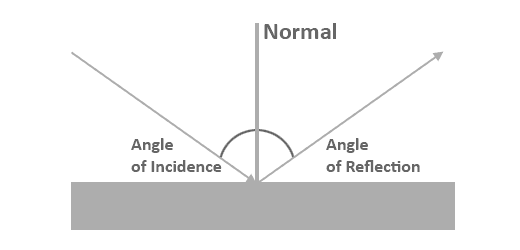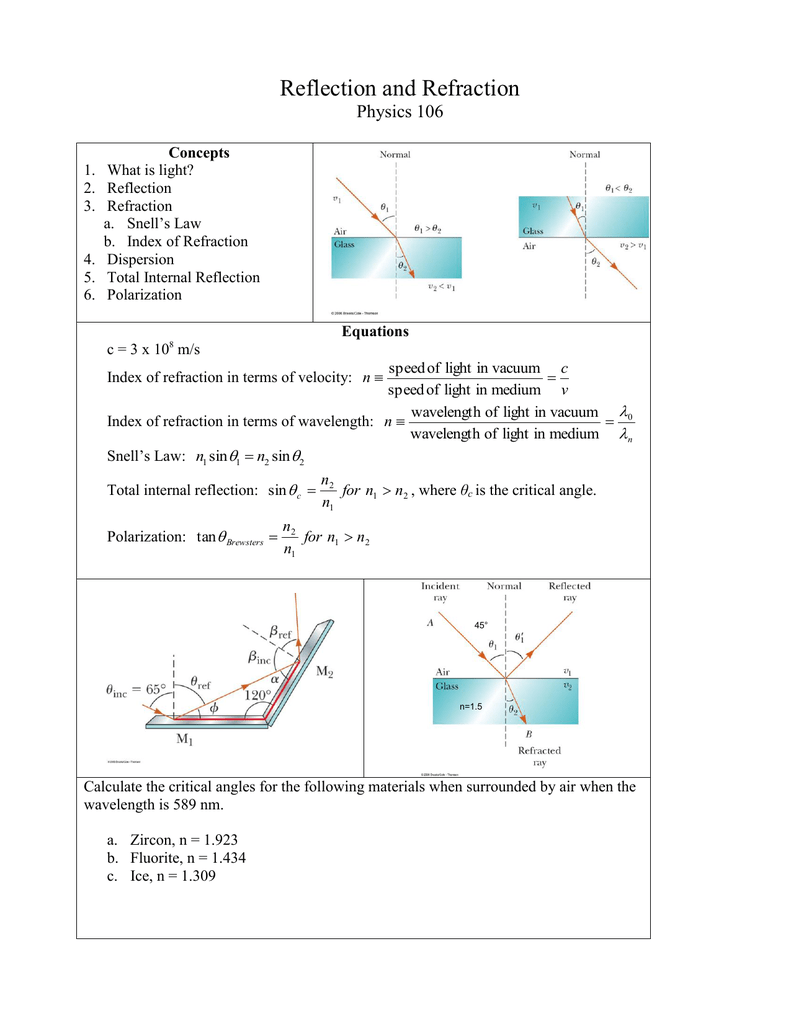

According to this law, the ratio of the sines of the angles of. In most instances, the imaging medium for microscopy is air, but high-magnification objectives often employ oil or a similar liquid between the objective front lens and the specimen to improve resolution. The relationship between the angles of incidence and refraction is given by Snells law. The angle of incidence is the angle between the incoming light and a line perpendicular to the surface called the normal. The angle of incidence is equal to the angle of reflection. The light is reflected at the same angle that it hits the surface. The reflected light still travels in a straight line, only in a different direction. In optical microscopy, refractive index is an important variable in calculating numerical aperture, which is a measure of the light-gathering and resolving power of an objective. Reflection occurs when light traveling through one material bounces off a different material. When the two refractive indices are equal ( n(1) = n(2)), then the light is passed through without refraction. When a ray of light (i.e., the incident ray) goes from rarer to denser medium, the ray (refracted ray) bends towards the normal in the denser medium.1 answer Top answer: Angle of incidence is equal to angle of reflection not refraction.Option b and c are correct Light not only bounces off surface it goes through some. Eventually the refracted ray will make an angle of 90 with. If n1>n2, then the angle of refraction is larger than the angle of incidencewhen there is an angle of refraction Imagine the angle of incidence getting larger and larger for the case of n1>n2. Alternatively when n(2) is greater than n(1) the angle of refraction is always smaller than the angle of incidence. If n1 If a ray of light can be seen entering and reflecting from a flat mirror, then the conduct of light as reflected must comply with a straight law known as the law of reflection. Light is considered to be acting in a very predictable way.Original Answer: brainly.ph/question/274240 How does the angle of incidence compare with the angle of reflection? where c is the velocity of light in vacuum, and v is the velocity of light in. The law of reflection states that when a ray of light reflects off a surface, the angle of incidence is equal to the angle of reflection. angle between the reflected ray and the normal the angle of refraction r. The angle between the reflected ray and the normal is known as the angle of reflection. The angle between the incident ray and the normal is known as the angle of incidence.How do you compare the angle of incidence and angle of reflection? When the value of the angle of incidence becomes greater than the critical angle, there is no refraction and the whole ray is internally reflected in the medium.


 0 kommentar(er)
0 kommentar(er)
